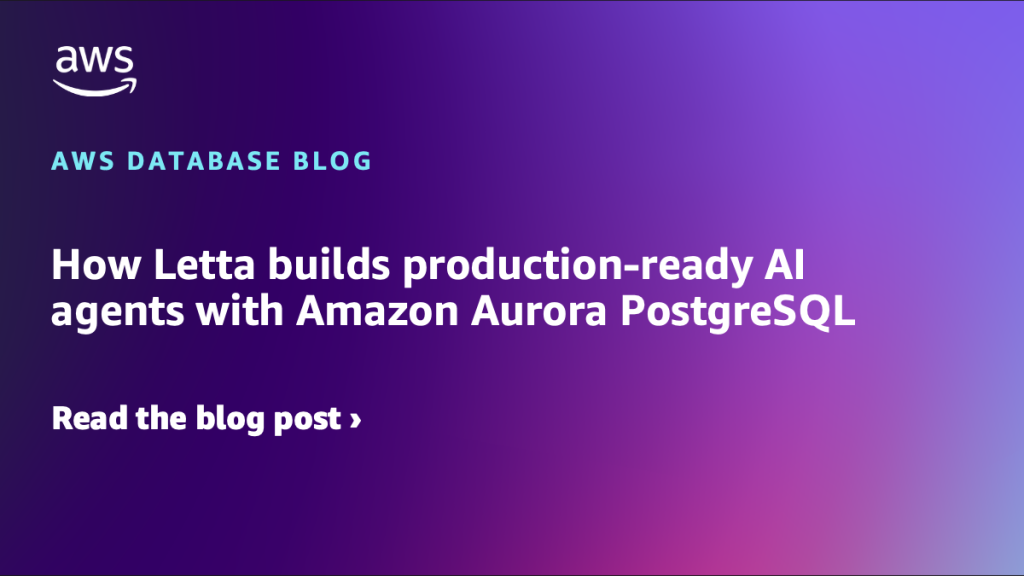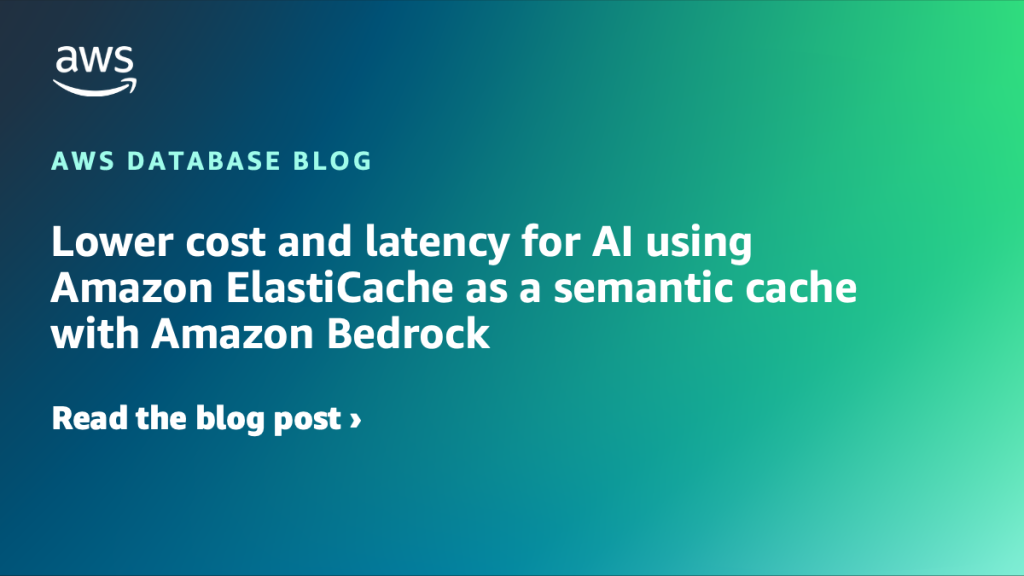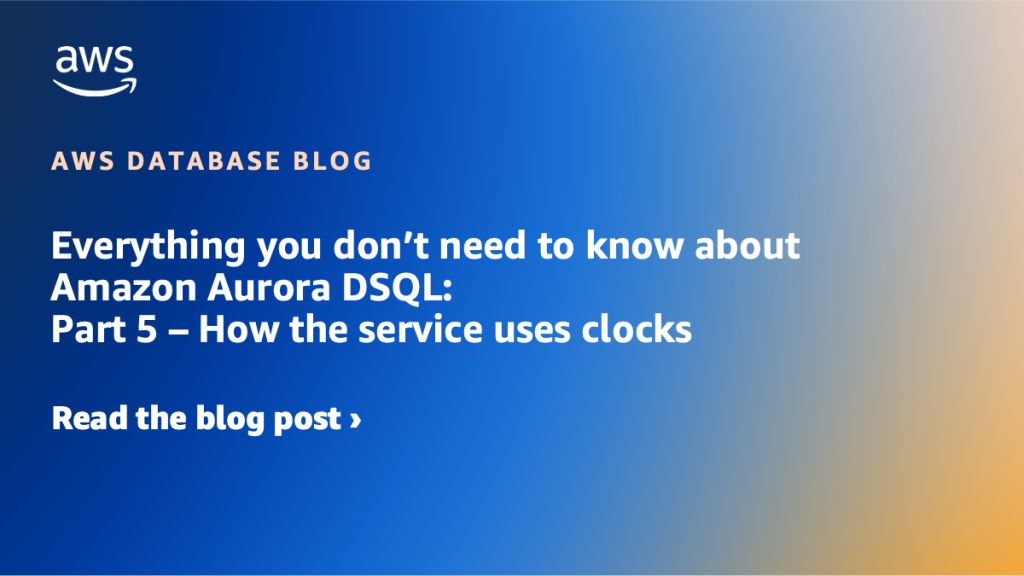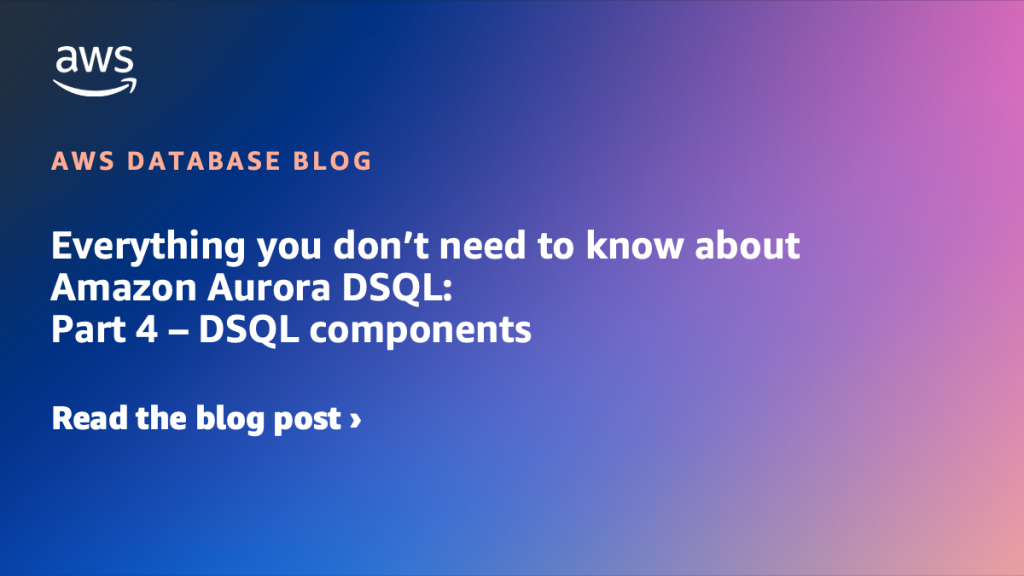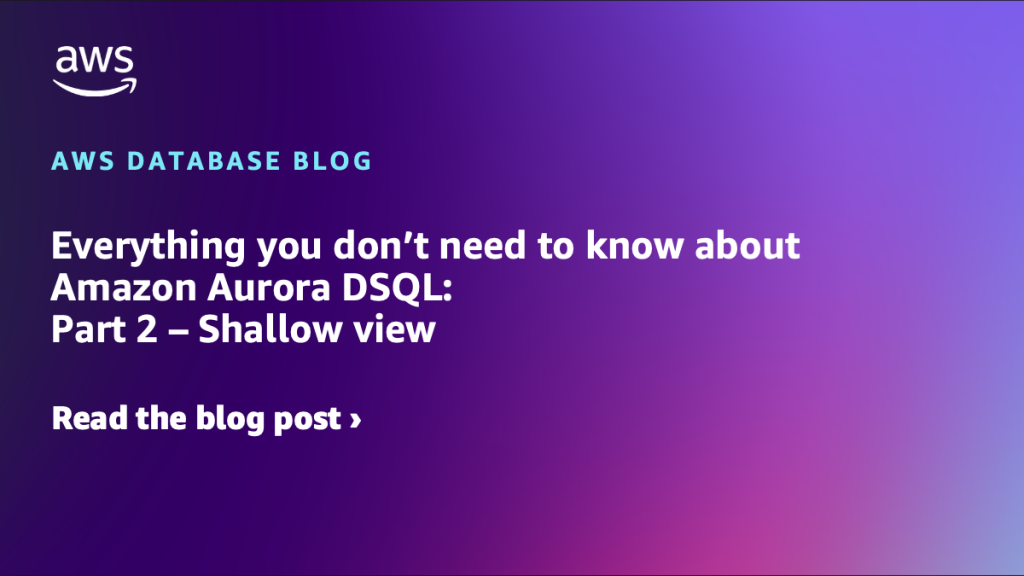AWS Database Blog
Netflix consolidates relational database infrastructure on Amazon Aurora, achieving up to 75% improved performance
Netflix operates a global streaming service that serves hundreds of millions of users through a distributed microservices architecture. In this post, we examine the technical and operational challenges encountered by their Online Data Stores (ODS) team with their current self-managed distributed PostgreSQL-compatible database, the evaluation criteria used to select a database solution, and why they chose to migrate to Amazon Aurora PostgreSQL to meet their current and future performance needs. The migration to Aurora PostgreSQL improved their database infrastructure, achieving up to 75% increase in performance and 28% cost savings across critical applications.
How Letta builds production-ready AI agents with Amazon Aurora PostgreSQL
With the Letta Developer Platform, you can create stateful agents with built-in context management (compaction, context rewriting, and context offloading) and persistence. Using the Letta API, you can create agents that are long-lived or achieve complex tasks without worrying about context overflow or model lock-in. In this post, we guide you through setting up Amazon Aurora Serverless as a database repository for storing Letta long-term memory. We show how to create an Aurora cluster in the cloud, configure Letta to connect to it, and deploy agents that persist their memory to Aurora. We also explore how to query the database directly to view agent state.
Lower cost and latency for AI using Amazon ElastiCache as a semantic cache with Amazon Bedrock
This post shows how to build a semantic cache using vector search on Amazon ElastiCache for Valkey. As detailed in the Impact section of this post, our experiments with semantic caching reduced LLM inference cost by up to 86 percent and improved average end-to-end latency for queries by up to 88 percent.
Build persistent memory for agentic AI applications with Mem0 Open Source, Amazon ElastiCache for Valkey, and Amazon Neptune Analytics
Today, we’re announcing a new integration between Mem0 Open Source, Amazon ElastiCache for Valkey, and Amazon Neptune Analytics to provide persistent memory capabilities to agentic AI applications. This integration solves a critical challenge when building agentic AI applications: without persistent memory, agents forget everything between conversations, making it impossible to deliver personalized experiences or complete multi-step tasks effectively. In this post, we show how you can use this new Mem0 integration.
Simplify data integration using zero-ETL from self-managed databases to Amazon Redshift
In this post, we demonstrate how to set up a zero-ETL integration between self-managed databases such as MySQL, PostgreSQL, SQL Server, and Oracle to Amazon Redshift. The transactional data from the source gets replicated in near real time on the destination, which processes analytical queries.
Amazon Ads upgrades to Amazon ElastiCache for Valkey to achieve 12% higher throughput and save over 45% in infrastructure costs
Amazon Ads enables businesses to meaningfully engage with customers throughout their shopping journey, reaching over 300 million audience in the US alone. Delivering the right ad to the right customer in real time at a global scale requires highly available, low-latency infrastructure capable of processing tens of millions of requests per second. In this post, […]
Everything you don’t need to know about Amazon Aurora DSQL: Part 5 – How the service uses clocks
In this post, I explore how Amazon Aurora DSQL uses Amazon Time Sync Service to build a hybrid logical clock solution.
Everything you don’t need to know about Amazon Aurora DSQL: Part 4 – DSQL components
Amazon Aurora DSQL employs an active-active distributed database design, wherein all database resources are peers and serve both write and read traffic within a Region and across Regions. This design facilitates synchronous data replication and automated zero data loss failover for single and multi-Region Aurora DSQL clusters. In this post, I discuss the individual components and the responsibilities of a multi-Region distributed database to provide an ACID-compliant, strongly consistent relational database.
Everything you don’t need to know about Amazon Aurora DSQL: Part 3 – Transaction processing
In this third post of the series, I examine the end-to-end processing of the two transaction types in Aurora DSQL: read-only and read-write. Amazon Aurora DSQL doesn’t have write-only transactions, since it’s imperative to verify the table schema or ensure the uniqueness of primary keys on each change – which results them being read-write transactions as well.
Everything you don’t need to know about Amazon Aurora DSQL: Part 2 – Shallow view
In this second post, I examine Aurora DSQL’s architecture and explain how its design decisions impact functionality—such as optimistic locking and PostgreSQL feature support—so you can assess compatibility with your applications. I provide a comprehensive overview of the underlying architecture, which is fully abstracted from the user.

